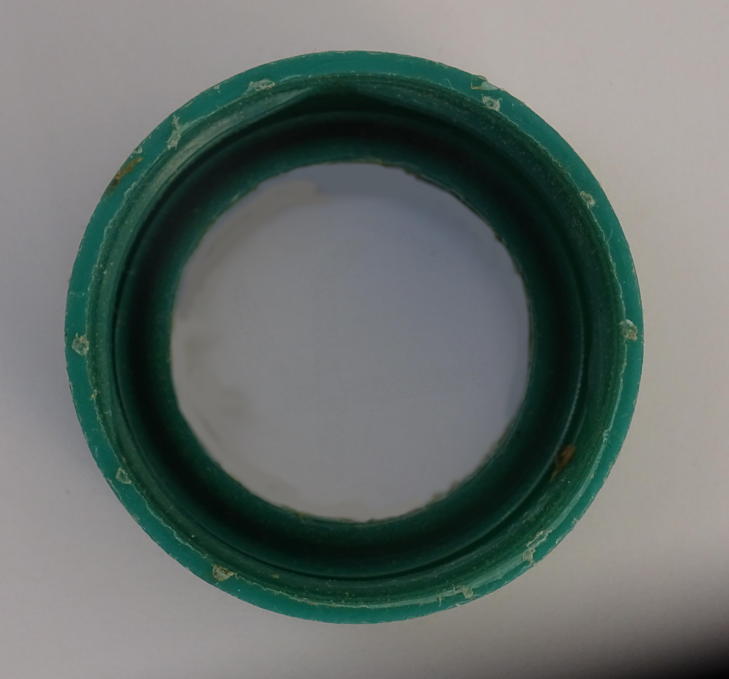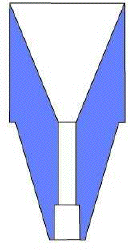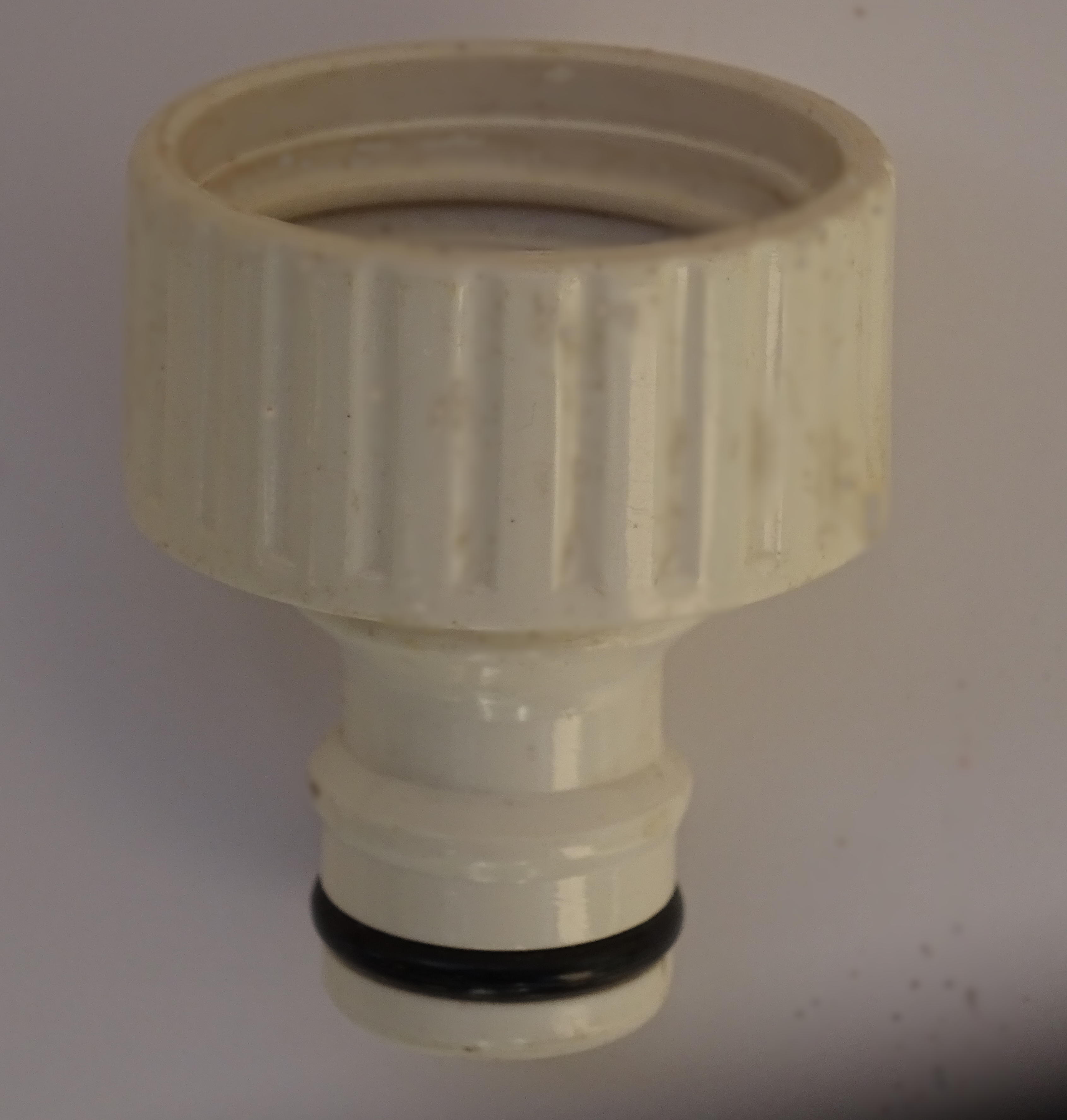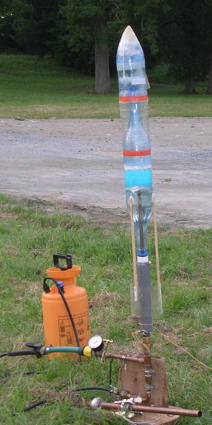The Nozzle
The nozzle of a water rocket is generally made up of the neck of the bottle. This has a diameter of 21.5 mm. This is the solution simpler and by far the most used.
Knowing that the thrust offered by such a nozzle is very important with regard to the mass of the rocket, which generates an acceleration phenomenal, we will probably not seek to increase this thrust, but rather to reduce it to obtain a longer thrust and a less acceleration.
In the event that it is necessary to have a stronger thrust (mass significant due to a substantial payload for example) it is then possible to put "boosters" which will be released once their job completed. But this solution will be the subject of another page.
In the following lines we will focus on reducing the diameter of the nozzle.
Réduction du diamètre de la tuyère
One of the solutions I use, solves two problems: waterproofness between the nozzle and the guide tube of the launching base then the reduction of the nozzle diameter. The reduction in diameter is minimal, we go from 21.5 mm to 20 mm. This nozzle is based on the use of caps of certain drinks such as Orangina for example (left photo below). These plugs provide sealing, unlike the use of a joint like a Coca-cola cap for example (middle photo below), but by a small collar inside the cap. The internal diameter of this collar is 20mm and tightening the cap on the neck, it presses on the collar which therefore sees its internal diameter decrease. By hollowing out the cap up to the flange, a 20 mm diameter nozzle is obtained. (right photo below). The nozzle-launcher seal is performed by tightening the cap (figure below). This solution has the merit of simplicity, but generates a loss of power during the "piston effect" phase of the propulsion due to important friction between the tube and the cap.
|
In blue the bottle In black, the cap in Red the tube diam. 20 mm from the launcher |
 |
 |
 |
 |
|
Cap with collar |
Cap without collar |
Cap with collar hollowed out |
Reduction of the nozzle diameter during propulsion
This solution allows reduction of the nozzle diameter (commonly called T-Nozzle) during the propulsion phase.
|
With a large nozzle opening diameter, the thrust is important, but short (the thrust is proportional to the surface of the nozzle and the water flow as well). The idea is therefore to keep all the power for take-off, then reduce the diameter of the nozzle so that the thrust is lower (but enough to overcome the air resistance and gravity) and longer lasting. For this, I designed a part, that a friend (thank you Jean-Pierre) has turned from a circle to PVC, which is placed on the inner tube of the launcher and which is placed in the nozzle after 15 cm traveled from the outlet of the tube. Cut of this piece opposite. Note that this works with the cap
with hollow collar seen above. It is indeed this plug
which blocks the diameter reducer at the outlet of the
neck. |

|
 |
The assembly of the rocket on the launcher is to put the cap (red here) on the 20mm diameter tube, then the reducer on the inner tube diameter 6 mm |
 |
Then we put the bottle on the whole and we screw the cap. |
This method of reducing the nozzle diameter can cause problems, because when the reducer is put in place, there is still water in the machine, so its center of gravity is quite low. So that the machine is stable its center of thrust must be below this CoG 'in charge'. To do this, you must either have large enough fins and which descend as low as possible to lower CoP, either ballast the rocket in the cone to raise the CoG, or a mixture of these two solutions.
I'm not sure the gain final in performance is very interesting, so much so that I never really tested this solution.
"Garden hose connector" type nozzle
|
The opposite picture shows a "garden hose connector" suitable for water rockets (this one comes from Japan). But we can DIY one from a commercial connector and of a bottle cap. Some sites on water rockets describe this possibility. The outlet diameter of the nozzle is 9 mm. All other things being equal, for a simple rocket of 120g, with a volume of 1.5l, inflated to 5 bars with 500 ml of water. The performances are as follows: Altitude identical to around 50m. The big differences are on acceleration, propulsion time and altitude at the end of propulsion which are respectively of: 1152 m/s/s, 54 ms and 1.2 m for the 21.5 mm nozzle against 187 m/s/s, 318 ms and 5 m for the 9 mm nozzle. Needless to say, the second is much easier to follow along its path. |
 |
Of course, this type of nozzle requires a suitable retained on a ramp, based on the female part of the garden connector.
Below is a photo of a ramp rocket with this system. A more complete description will be made on the page dedicated to launch systems.



